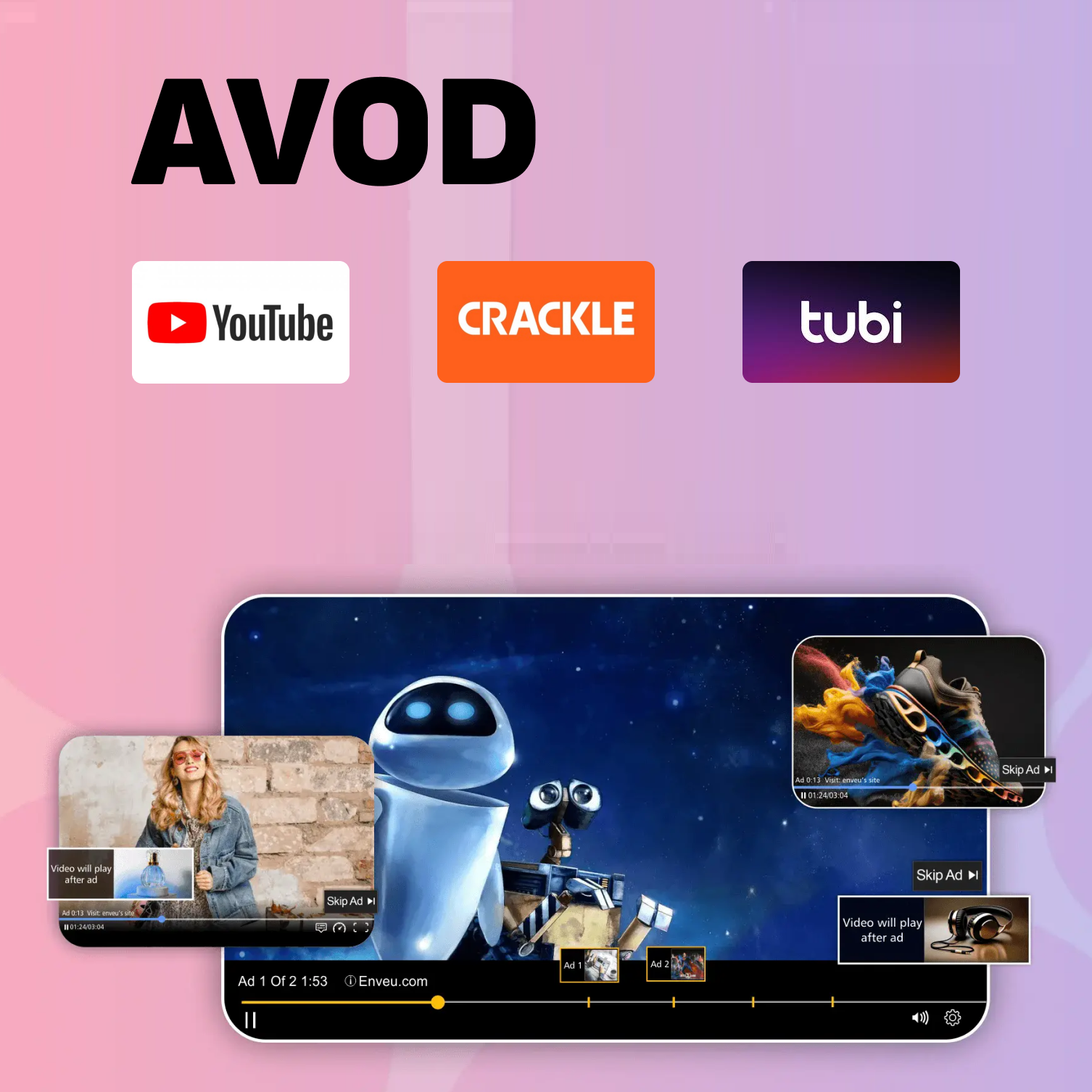As digital media and entertainment continue to evolve, it’s important for both content creators and audiences to be aware of the various monetization strategies that platforms use. Two popular models that have gained significant traction are AVOD (Advertising Video on Demand) and FAST (Free Ad-Supported Streaming TV). Although they may sound similar due to their reliance on advertising revenue, they differ in various aspects, including content delivery, audience engagement, and user experience. This blog will explore the differences between AVOD and FAST to help you better understand these streaming models.
AVOD stands for Advertising Video on Demand. It is a video-on-demand model where users can access content for free, with the platform supported entirely by advertising revenue. Think of it as the digital version of traditional television: users watch shows or movies at no cost, but they must sit through ads interspersed throughout the content.
FAST stands for Free Ad-Supported Streaming TV. Unlike AVOD, FAST is more akin to traditional television broadcast models, but delivered over the internet. It involves streaming linear channels with scheduled programming, supported entirely by advertising revenue. Users can tune in to these channels just like they would on a cable or satellite service.
The choice between AVOD and FAST depends on the viewing preferences of the user and the goals of the content provider:
For Viewers: AVOD offers more flexibility, allowing viewers to choose what they want to watch and when. It’s ideal for those who prefer an on-demand experience without a monthly fee. On the other hand, FAST caters to viewers who enjoy the traditional TV experience of discovering content by browsing through channels and don’t mind having their viewing interrupted by ads.
For Content Providers: AVOD is suitable for platforms looking to offer a broad range of content, appealing to a wide audience. It provides flexibility in content choice and the opportunity to generate revenue through targeted ads. FAST, however, allows providers to tap into the nostalgia of traditional TV and capture audiences through scheduled programming, often with lower content licensing costs.
As the media landscape continues to evolve, both AVOD and FAST are likely to coexist and thrive, each catering to different segments of the audience. The ad-supported model offers a sustainable path to profitability, especially as the subscription fatigue sets in, with users looking for free content options. Moreover, advancements in technology, such as targeted advertising and AI-driven content recommendations, will continue to enhance the user experience for both AVOD and FAST platforms.
Both AVOD and FAST offer unique advantages and cater to different viewer preferences. AVOD appeals to those who enjoy on-demand content with minimal ad interruptions, while FAST is perfect for viewers who prefer the traditional TV experience with scheduled programming. As the streaming landscape diversifies, understanding these models will be crucial for making informed choices, whether you are a viewer seeking the best way to consume content or a content provider looking to maximize reach and revenue.
Platforms like Vodlix effectively leverage these monetization models to offer a flexible and engaging viewing experience. By providing both AVOD and FAST options, Vodlix caters to a wide audience, ensuring that viewers have access to quality content while also creating valuable opportunities for advertisers. As the market continues to evolve, platforms like Vodlix will play a crucial role in shaping the future of ad-supported streaming.








